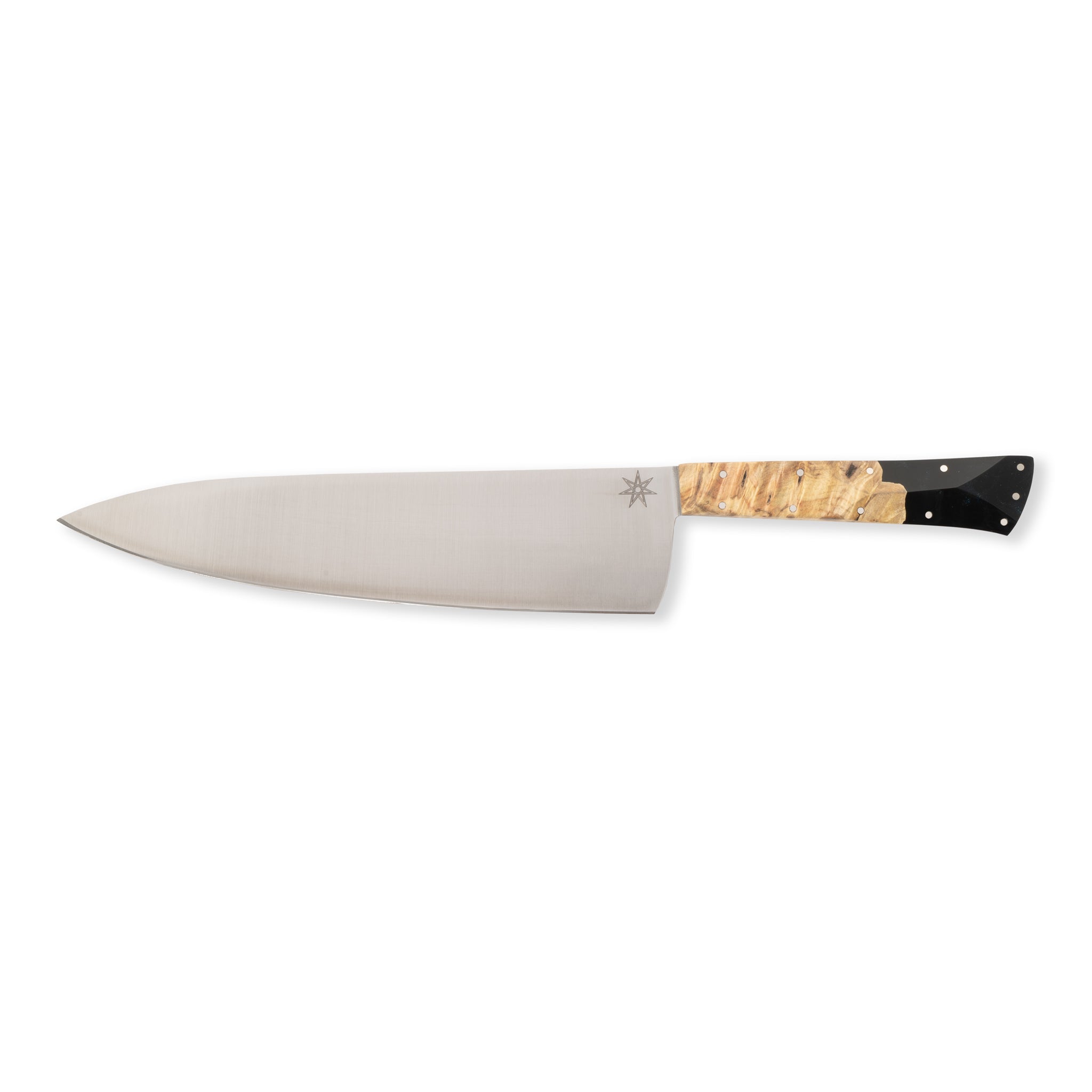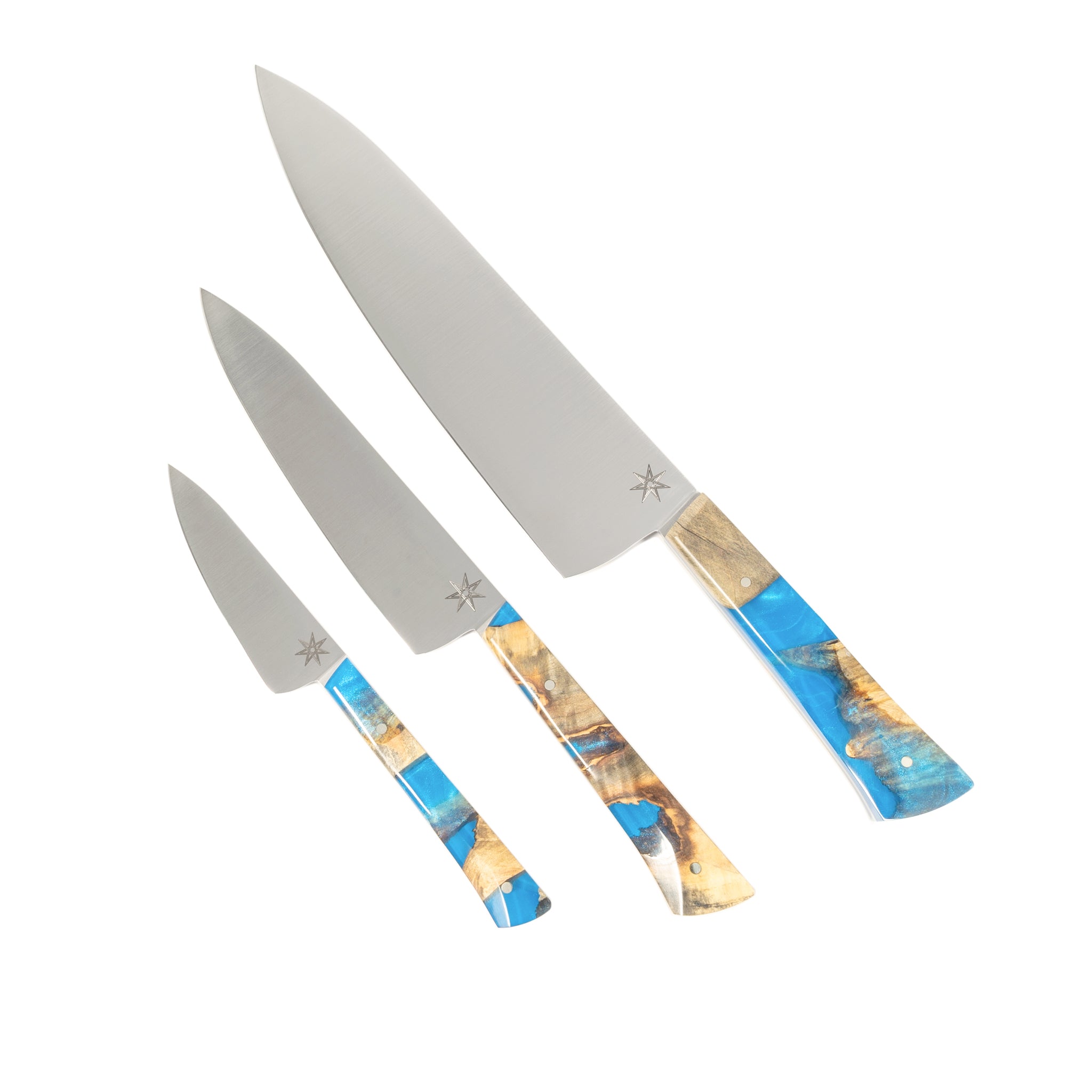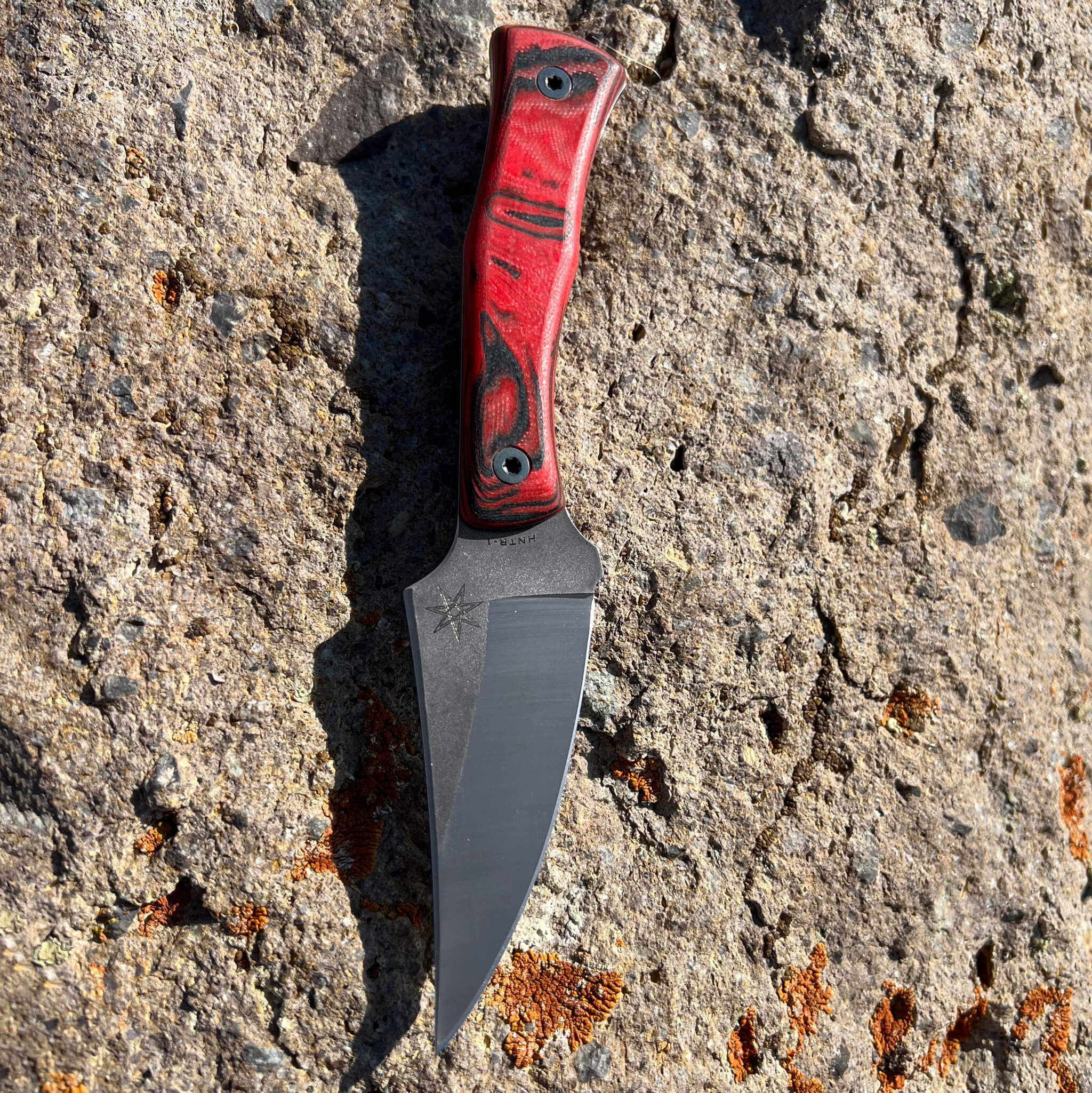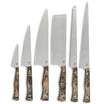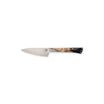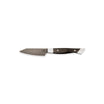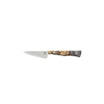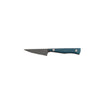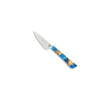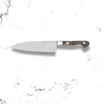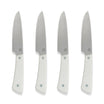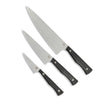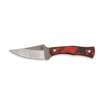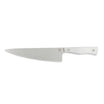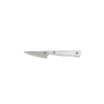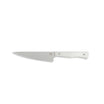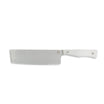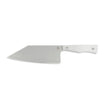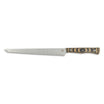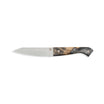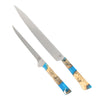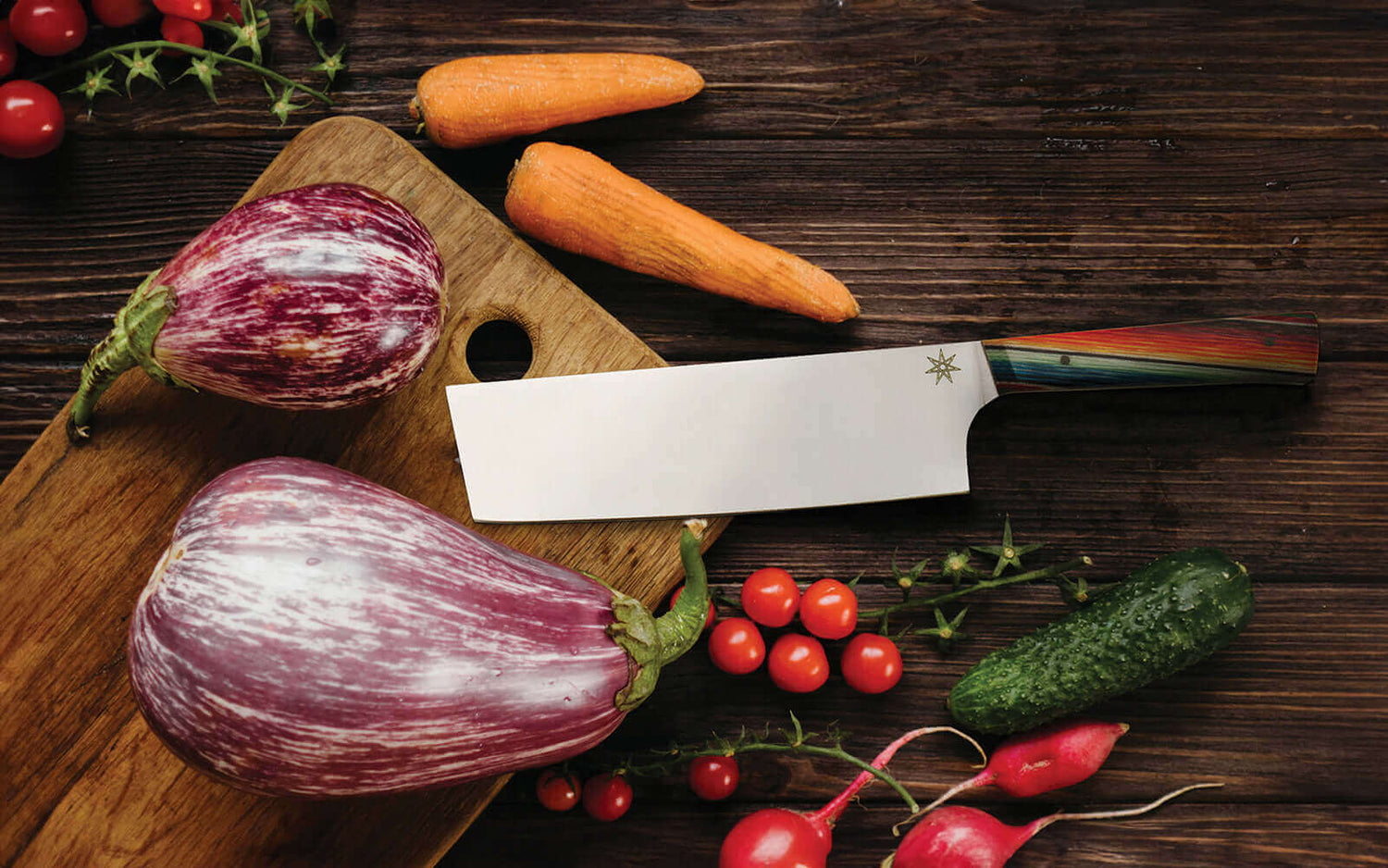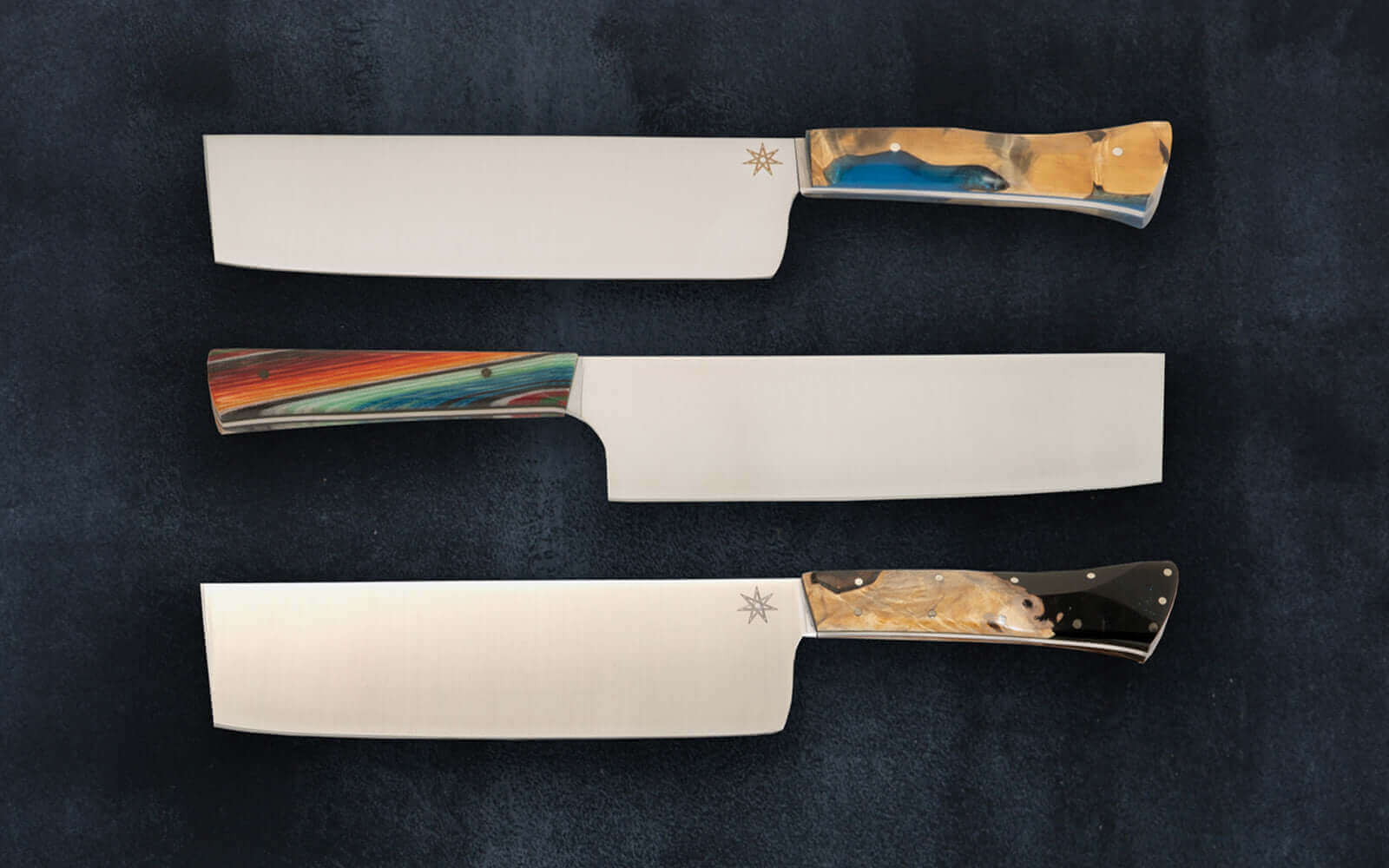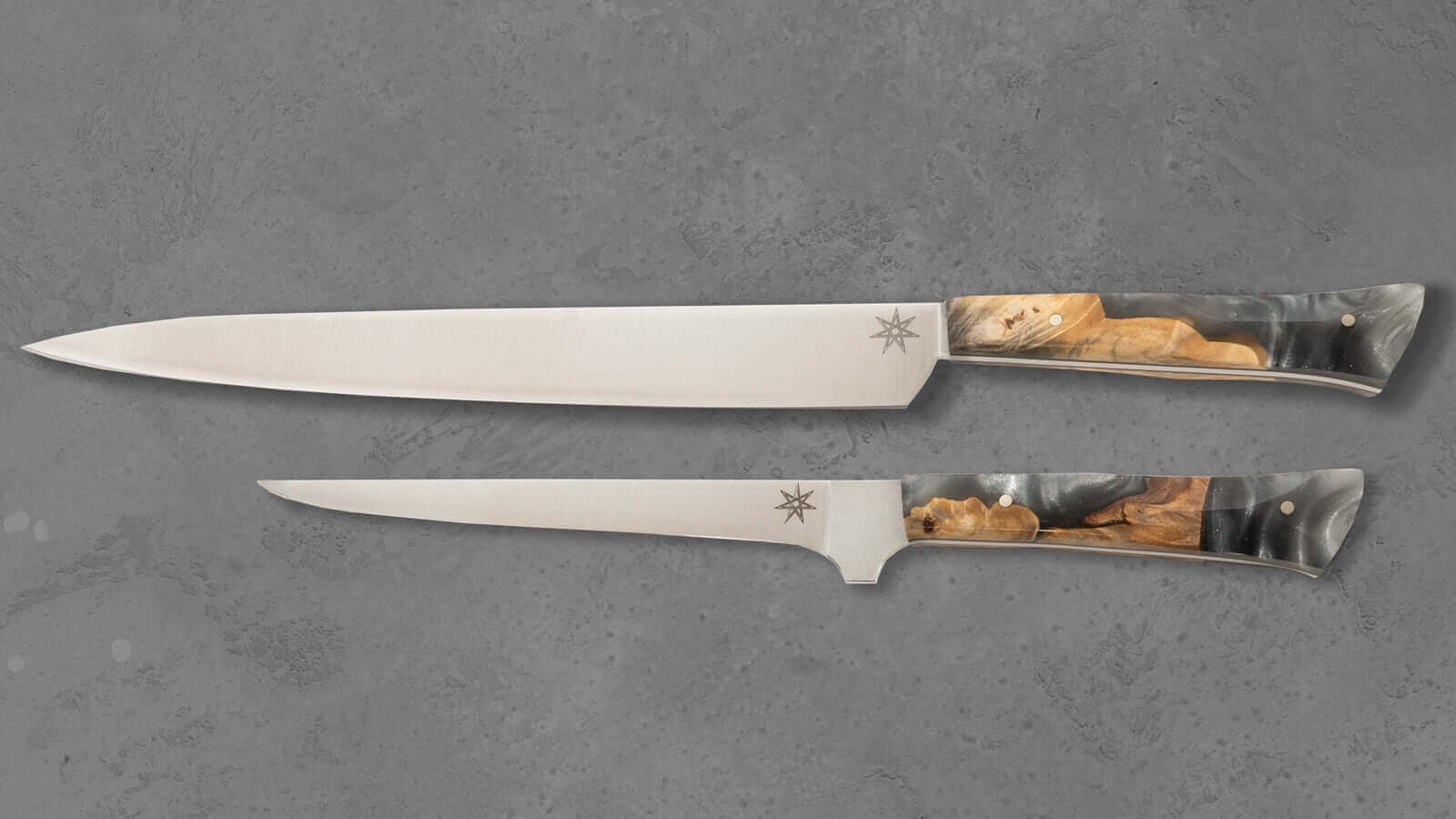The nakiri knife, hailing from Japan, boasts a rich culinary heritage deeply rooted in tradition and craftsmanship. Originating from the Edo period (1603-1868), this knife was purposefully designed for the art of vegetable preparation. Its name, "nakiri," translates to "leaf cutter" or "vegetable cutter," representing its primary function.
The nakiri knife is characterized by its rectangular, thin, and double-beveled blade, which lends to precise cuts, such as chopping, slicing, and dicing vegetables. Its flat profile and sharp edge minimize the surface area of vegetables that it comes into contact with, resulting in minimal oxidation and preserving the vibrancy of flavors and colors.
Origins and Significance of the Nakiri Knife
Forged by skilled Japanese artisans using time-honored techniques, the nakiri knife embodies both form and function. Over the years, it has become an important part of Japanese culinary culture, cherished for its ability to enhance the presentation and taste of dishes while honoring fresh, natural ingredients. As global culinary influences spread, the nakiri knife has moved beyond its origins, finding a place in kitchens worldwide as other cultures recognize the artistry and precision of the nakiri knife.
Prior to World War II, the nakiri knife was one of the most popular knives in Japan due to the main ingredient in daily meals being vegetables. Following the war, many other foods were introduced into the Japanese diet, however the nakiri knife remains a staple even today. At that time, the knife began to spread to other regions and is still in use by many people around the world.

Anatomy and Design of the Nakiri Knife
The blade is a thin, rectangular shape which is efficient for quick vegetable cutting in various forms. The double-edged blade lends to versatile preparation techniques – such as chopping, slicing, and dicing vegetables. The double bevel of the knife is beneficial for comfort of all users, because it allows both right-handed and left-handed users to use the knife with ease.
Nakiri knives with the traditional wooden handle boast an ergonomic design that makes for comfort while handling the knife, even during long preparation sessions. The construction showcases a full tang, ensuring optimal balance and durability, while the riveted handle, often made from wood or other high-quality materials, provides a secure and comfortable grip.
Nakiri Knife in Modern Culinary Practices
In modern culinary trends, the nakiri knife emerges as a symbol of precision and sustainability. With an increasing emphasis on plant-based cuisine and farm-to-table practices, this traditional Japanese blade has found renewed relevance in the contemporary kitchen. Its razor-sharp edge and flat profile make it an ideal tool for effortlessly executing intricate vegetable cuts, which lends to its utility when creating visually appealing and creatively plated dishes.
The precision cuts are also ideal for maintaining vegetable integrity and texture while preparing meals. The sharp blade and ergonomic design reduces the risk of bruising and other damage to vegetables while cutting, which overall enhances the aesthetics and flavors of dishes being prepared.
As sustainability takes center stage, the nakiri knife's design, often featuring eco-friendly handle materials and mindful production processes, matches seamlessly with the eco-conscious philosophy of today's culinary world. Whether in the hands of a seasoned chef or an adventurous home cook, the nakiri knife’s blend of tradition with innovation makes it a staple tool in modern culinary expression.
Care and Maintenance
To properly care for a nakiri knife, it is essential to hand wash and immediately dry the knife to prevent corrosion or rust build up. Hand washing is preferred, as the harsh environment of an automatic dishwasher can damage and dull the blade over time. Between uses, the knife should be stored safely within a knife block or in a drawer with a well-fitted knife cover, or sayas, to protect the blade.
Nakiri knives also benefit from regular honing to maintain the knife’s edge between sharpening. There are different techniques for sharpening the nakiri knife to perfection, however you may use modern sharpening tools or, as we recommend, a whetstone. We offer two different types of whetstones at Town Cutler, including a dual-sided stone for when kitchen space is limited.
Nakiri Knife vs. Western Knives
As we know, nakiri knives are specialized Japanese knives designed for precise vegetable cutting, while Western knives, which are commonly associated with European and American traditions, encompass a broader range of styles and are used for various culinary tasks.
Japanese knives are crafted with more thought given to precision work and having a perfect blade for every purpose. These knives are lighter, designed for accuracy and balance to allow cutting without effort. Western knives are traditionally more versatile in nature, and are rather heavy.
The choice between the two depends on the user's preferred cutting style, culinary needs, and personal preferences. Western knives are multipurpose and suitable for a wide range of cutting tasks, including chopping, slicing, and dicing vegetables, meat, and other ingredients. Western knives are often made from softer steel, which can be more durable and forgiving in terms of maintenance but may not hold an edge as long as Japanese knives. Western knives also usually have a single-beveled edge, making them more suitable for right-handed users. Some modern Western knives have double-beveled edges to accommodate both hand orientations, but most all nakiri knives have double bevel making them suitable for both right and left handed users.
The nakiri knife, renowned for its precision in vegetable preparation, is a culinary tool crafted with meticulous thought and careful construction. Typically created with a traditional Japanese approach, the blade is expertly composed of high-carbon stainless steel, blending the best of both worlds—offering excellent edge retention and corrosion resistance. The blade's thinness is achieved through a thorough tapering process, which lends to its skill with precise slicing and dicing. This harmonious fusion of materials and construction transforms the nakiri knife into an instrument of culinary elegance, poised to effortlessly transform vegetables into culinary works of art.

